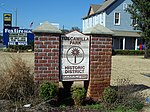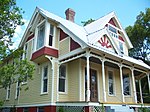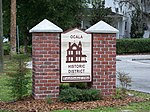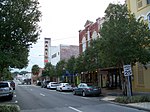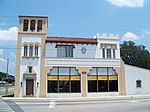United Hebrews of Ocala
1888 establishments in FloridaBuildings and structures in Ocala, FloridaCarpenter Gothic architecture in FloridaCarpenter Gothic synagoguesFlorida building and structure stubs ... and 10 more
Former synagogues in FloridaHistoric district contributing properties in FloridaNRHP infobox with nocatNational Register of Historic Places in Marion County, FloridaReform synagogues in FloridaReligious organizations established in 1888Synagogues completed in 1888Synagogues on the National Register of Historic Places in FloridaUnited States synagogue stubsUse mdy dates from August 2023

The former United Hebrews of Ocala synagogue is a historic Carpenter Gothic building located at 729 N.E. 2nd Street, in the Tuscawilla Park Historic District of Ocala, Florida. Built in 1888, it was one of the first synagogues in Florida. It is listed in the Marion County section of A Guide to Florida's Historic Architecture, published in 1989 by the University of Florida Press in Gainesville. In 1963, the congregation adopted the name Temple B'nai Darom. The building is a contributing property to the historic district. It is among the oldest synagogue buildings still standing in the United States.
Excerpt from the Wikipedia article United Hebrews of Ocala (License: CC BY-SA 3.0, Authors, Images).United Hebrews of Ocala
Northeast 2nd Street, Ocala
Geographical coordinates (GPS) Address Nearby Places Show on map
Geographical coordinates (GPS)
| Latitude | Longitude |
|---|---|
| N 29.188611111111 ° | E -82.130555555556 ° |
Address
Ocala Bible Chapel
Northeast 2nd Street
34470 Ocala
Florida, United States
Open on Google Maps

